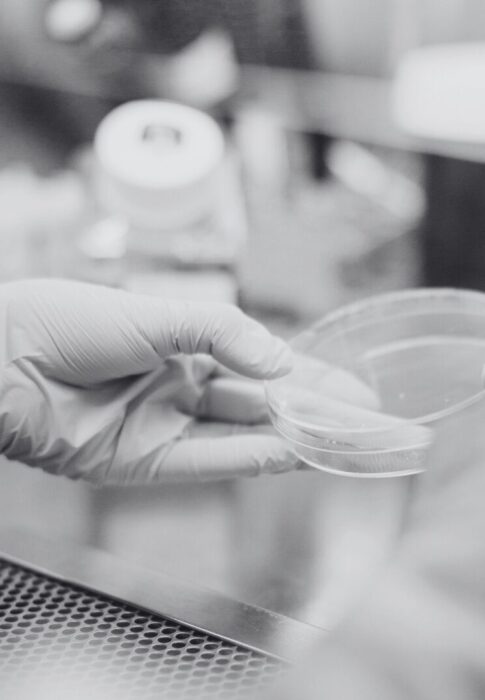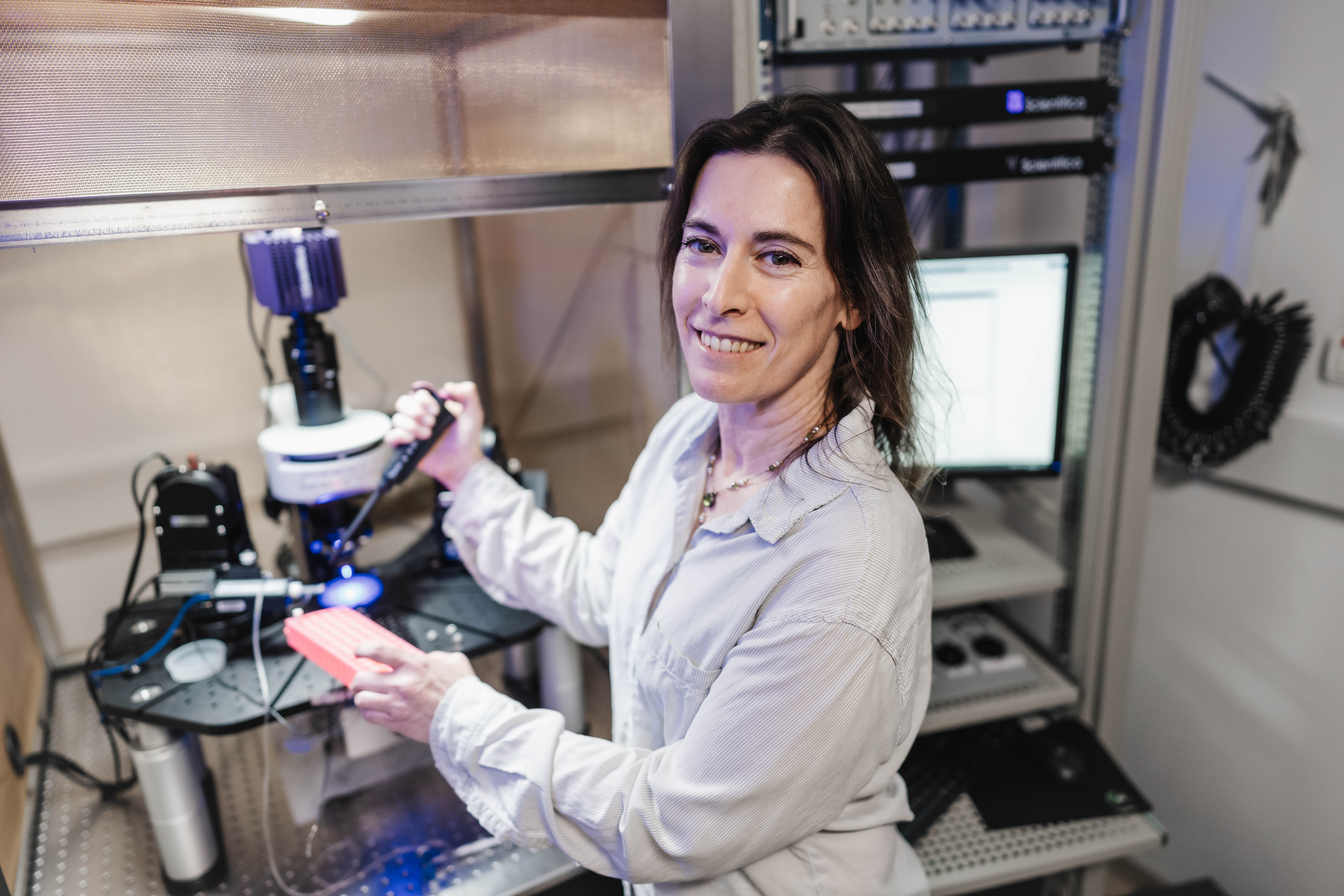Exosomes
Exosomes are tiny, membrane-bound vesicles (50-200 nm in size) released by many types of cells including eukaryotic cells, into the extracellular environment.1,2 They facilitate intercellular communication by transporting a diverse array of proteins, lipids, and nucleic acids from their parent cells. Exosomes are formed by the inward budding of the endosomal membrane, resulting in multivesicular bodies that when fused with the cell membrane, release their contents into the surrounding space. These small vesicles were found to have important functions in health and in disease. They play a crucial role in cell-to-cell communication by transferring proteins, lipids, and nucleic acids (like mRNAs and microRNAs) from one cell to another. This transfer can influence the behavior and function of recipient cells. Exosomes carry a variety of cargo,2 which can include signaling molecules, enzymes, and genetic material. This cargo can impart specific biological signals to target cells, affecting processes like inflammation, immune responses, and cell survival.
They play a crucial role in cell-to-cell communication by transferring proteins, lipids, and nucleic acids (like mRNAs and microRNAs) from one cell to another. This transfer can influence the behavior and function of recipient cells.
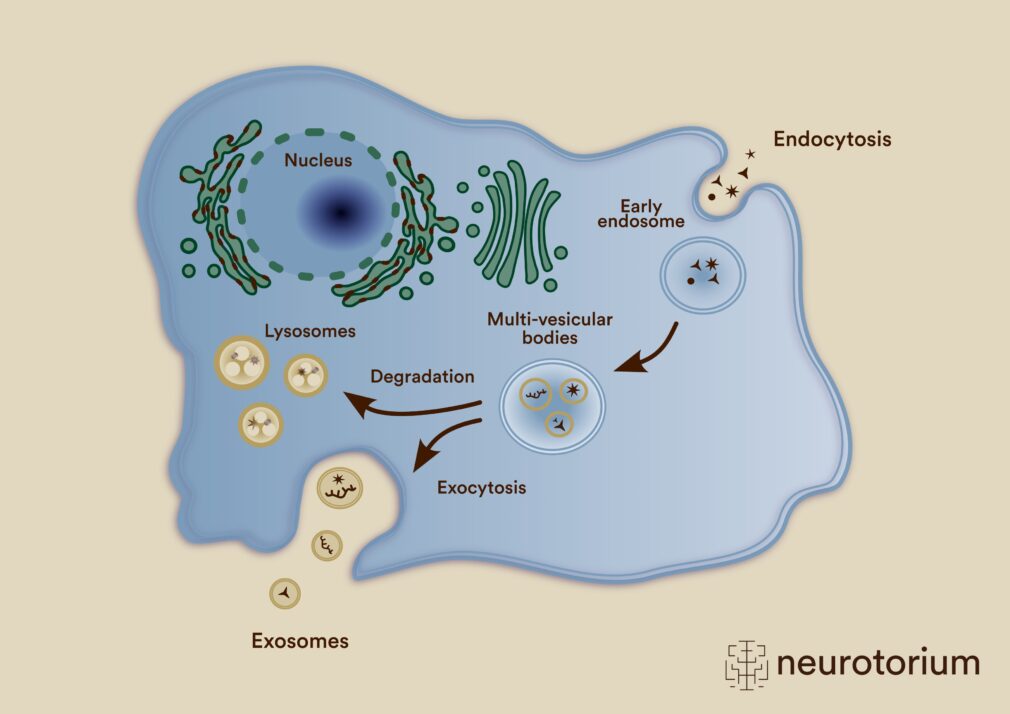
Figure 1: A schematic representation of a cell actively releasing exosomes into the extracellular space.
Exosomes, small membrane-bound vesicles (30-150 nm in diameter), are shown budding off from the plasma membrane. These vesicles originate from the endosomal system and are released when multivesicular bodies fuse with the plasma membrane. Exosomes carry proteins, lipids, and nucleic acids that can influence neighboring cells or distant tissues, playing crucial roles in intercellular communication, immune responses, and disease progression.
Exosomes have been implicated in various diseases, including ASD and neurodegenerative disorders. For instance, they can facilitate the spread of toxic proteins in neurodegenerative diseases like Alzheimer’s and Parkinson’s disease.3 Due to their ability to transport biological molecules and influence cellular processes, exosomes are being explored as potential therapeutic agents. They are particularly attractive because they are generally well-tolerated by the immune system; they can be produced in large quantities, and can deliver therapeutic agents directly to target cells. Overall, exosomes are an important aspect of cellular communication and have significant implications for both health and disease states.
Due to their ability to transport biological molecules and influence cellular processes, exosomes are being explored as potential therapeutic agents.
Numerous studies have highlighted the role of exosomes in mediating signaling during immune and inflammatory cellular responses. Furthermore, exosomes have been shown to carry misfolded or aggregated proteins linked to neurodegenerative diseases such as Alzheimer’s disease (AD), Parkinson’s disease (PD), and amyotrophic lateral sclerosis (ALS), which can spread pathological characteristics to recipient cells.4 Previous investigations have also reported the advantageous properties of exosomes. For example, exosomes derived from oligodendrocytes can enhance neuronal survival under stress conditions.5 Exosomes have been shown to exert neuroprotective effects in models of Parkinson’s disease by promoting neuronal survival and reducing neuroinflammation.6 Additionally, research indicates that exosomes can facilitate intercellular communication and deliver therapeutic RNA molecules, offering innovative strategies for treating conditions such as Alzheimer’s disease and schizophrenia.7,8 These findings suggest that exosome-based therapies could pave the way for novel treatment approaches in neurodegenerative and psychiatric disorders. Recent research has explored the application of exosomes in the treatment of multiple sclerosis (MS), showing that exosomes derived from MSCs can promote remyelination and modulate immune responses, thereby suggesting their potential as a therapeutic strategy in MS management.9 Additionally, studies have indicated that exosomes can carry protective factors that alleviate cognitive deficits in traumatic brain injury (TBI), highlighting their promise as a non-invasive treatment option for neurotrauma.10 Furthermore, exosomes have been utilized in the delivery of therapeutic agents for mood disorders, with findings demonstrating that exosomes can transport antidepressant compounds, offering a novel route for enhancing therapeutic efficacy in depression.11
These findings suggest that exosome-based therapies could pave the way for novel treatment approaches in neurodegenerative and psychiatric disorders. Recent research has explored the application of exosomes in the treatment of multiple sclerosis (MS)
Stem Cells
Stem cells are unique cells characterized by their ability to self-renew and differentiate into various cell types. There are several kinds of stem cells, broadly categorized into two main types: embryonic stem cells (ESCs) and adult (or somatic) stem cells. Embryonic stem cells are derived from the inner cell mass of a blastocyst and can give rise to any cell type in the body, meaning that they are pluripotent.12 Adult stem cells, on the other hand, are more specialized and are found in various tissues, serving as a repair system for the body. They include hematopoietic stem cells (which differentiate into blood cells) and mesenchymal stem cells (MSCs), which can develop into a variety of cell types, including bone, cartilage, and fat cells. MSCs are particularly notable for their ability to modulate immune responses and promote tissue repair, making them a focus of research in regenerative medicine.
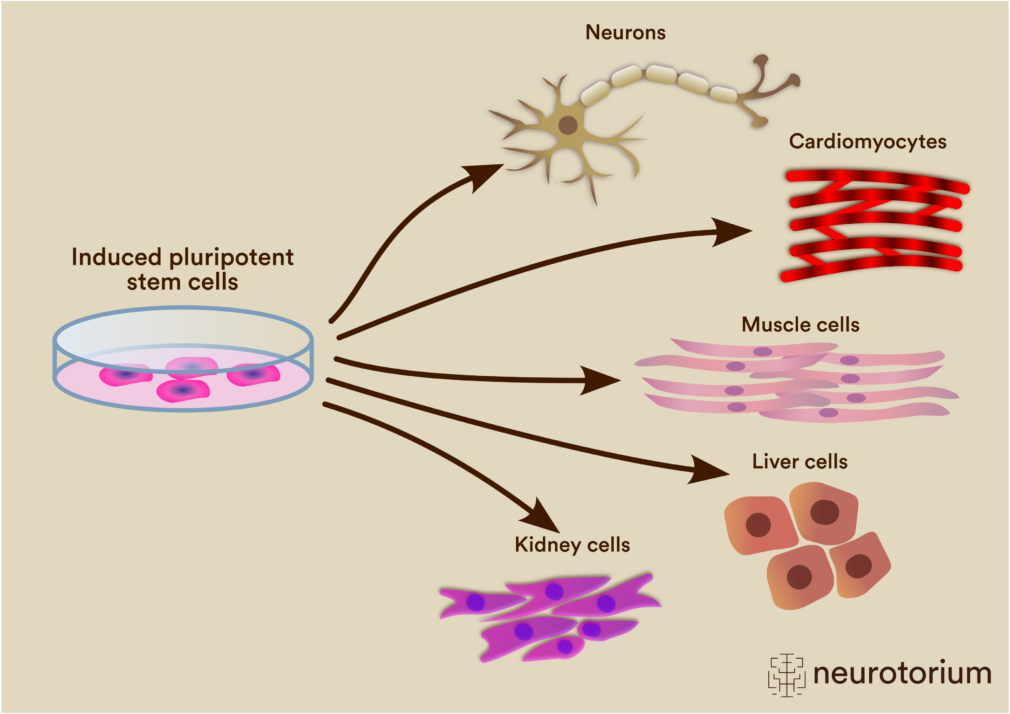
Figure 2: Differentiation of Induced Pluripotent Stem Cells (iPSCs) into Multiple Cell Types
A diagram illustrating the differentiation potential of induced pluripotent stem cells (iPSCs). On the left, iPSCs are shown as undifferentiated cells, characterized by their ability to self-renew and differentiate into various cell types. On the right, the iPSCs are depicted differentiating into several specialized cell types, including neurons, cardiomyocytes, hepatocytes (liver cells), myocytes (muscle cells), and renal cells. This highlights the pluripotency of iPSCs and their potential applications in regenerative medicine, disease modeling, and drug discovery.
Induced pluripotent stem cells (iPSCs) are a groundbreaking type of stem cell created by reprogramming adult somatic cells to a pluripotent state,13 allowing them to develop into any cell type, with similar properties to embryonic stem cells. This reprogramming is achieved by introducing specific genes associated with maintaining the defining characteristics of pluripotency by transfection.14 iPSCs hold great promise for regenerative medicine and disease modeling because they can be derived from the patient’s own cells, reducing the risk of immune rejection and ethical concerns surrounding the use of embryonic stem cells. Importantly, they carry the patient’s DNA, thus allowing the generation of a perfectly matched DNA model. Their versatility allows researchers to investigate diseases, develop new therapies, and potentially create patient-specific cells for transplantation and treatment.15-22 As research progresses, both MSCs and iPSCs continue to expand the horizons of regenerative medicine and therapeutic interventions.
iPSCs hold great promise for regenerative medicine and disease modeling because they can be derived from the patient’s own cells, reducing the risk of immune rejection and ethical concerns surrounding the use of embryonic stem cells
Exosomes from different stem cells to treat neurological conditions
MSC-derived exosomes are emerging as possible therapeutics for autism spectrum disorder (ASD) and other neurological disorders.23 Intranasal administration of MSC-derived exosomes improved the social deficits in a SHANK3 KO mouse.24 Exosomes obtained from mesenchymal stem cells reduce inflammation and demyelination in the central nervous system of experimental allergic encephalomyelitis (EAE) rats by influencing the polarization of microglia.25 The number of studies working with exosomes derived from MSCs has been increasing dramatically over the past 3 years and consists of around 500 studies per year. MSCs are extracted from various tissues, usually bone marrow. They are collected under anaesthesia. They can be propagated a limited number of times (around 5). Human induced pluripotent stem cells (hiPSCs) are more easily collected; they require a small blood sample, and there are even protocols for preparing them from urine samples.26 Once made, they can be split and propagated many times (around 50) and this makes them an almost indefinite source for exosome extractions. They are pluripotent and can be differentiated into any cell type in the body, while MSCs are limited to specific lineages. They are patient specific and can be generated from each patient’s own somatic cells, minimizing the risk of immune rejection. Tools such as CRISPR-Cas9, TALENs, and others are often optimized for iPSCs. These tools can be used to introduce, delete, or replace genetic material with high efficiency in iPSCs27,28 This makes them a potentially better source of exosomes.
Human induced pluripotent stem cells (hiPSCs) are more easily collected; they require a small blood sample, and there are even protocols for preparing them from urine samples26
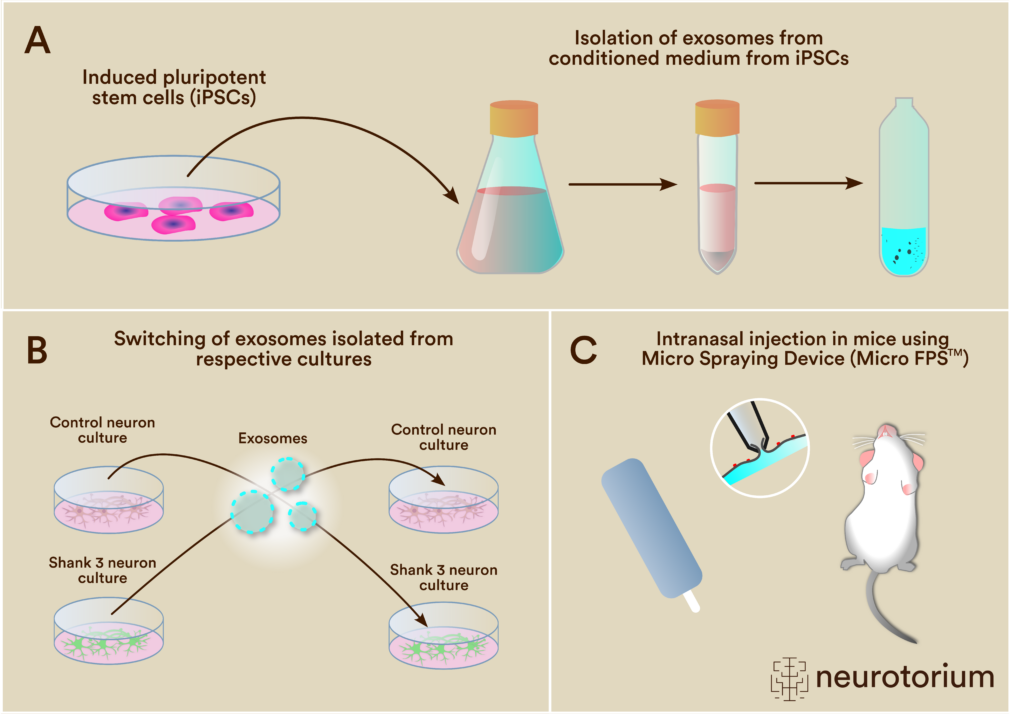
Figure 3: Therapeutic Potential of iPSC-derived Exosomes in Rescuing ASD Phenotypes
A. Isolation of exosomes from iPSC-conditioned media involves a multistep ultracentrifugation process. This method enables the purification of small extracellular vesicles, which carry bioactive molecules such as proteins, RNA, and lipids, reflecting the molecular state of their cells of origin.
B. Exosome transfer experiments show that exchanging exosomes between cortical neurons derived from ASD patients and healthy controls induces ASD-like phenotypes in control neurons, suggesting that exosomal contents play a key role in modulating neuronal behavior.
C. Intranasal administration of exosomes derived from mesenchymal stem cells (MSCs) and iPSCs demonstrates the potential to rescue ASD-associated behaviors in mouse models. This highlights the therapeutic potential of exosomes in neurodevelopmental disorders, offering a promising avenue for non-invasive treatments.
We have reported that neurons derived from Autism spectrum disorder (ASD) patients have accelerated maturation and are hyperexcitable early in their differentiation compared to neurons derived from healthy controls.15,20,29 This happens in patients with mutations in ASD-linked genes such as SHANK3 and GRIN2B, and also in idiopathic patients where the genetic changes are not known.29 We started by exploring whether switching of neuronal exosomes between neurons derived from patients and controls will also switch the neuronal phenotypes. We have found30 that control neurons that were treated with exosomes extracted from neurons that were derived from patients with a mutation in their SHANK3 gene became similar to the SHANK3 neurons. However, exosomes extracted from control neurons did not rescue the phenotypes of ASD neurons. We next extracted exosomes from both MSCs and iPSCs (control lines) and treated ASD neurons (from different mutations). Both MSC and hiPSC-derived exosomes rescued the phenotypes in ASD neurons.
We subsequently conducted quantitative proteomics utilizing LC-MS/MS to analyze the protein cargo of these different types of exosomes. We found that the exosomes from SHANK3 mutant neurons contained a high number of proteins (216 different types) and those from MSCs had 217 types, in contrast to exosomes from control neurons (114 types of proteins) and iPSC-derived exosomes (32 types of proteins).30 A cellular component analysis of the protein cargo from these exosomes showed a significant enrichment for “exosomes” and “extracellular” proteins, confirming the validity of the exosome isolation. Furthermore, neuron-derived exosomes exhibited enrichment for “cytoplasm”, which was not observed in the stem cell-derived exosomes.
A cellular component analysis of the protein cargo from these exosomes showed a significant enrichment for “exosomes” and “extracellular” proteins, confirming the validity of the exosome isolation.
A biological pathway analysis of differentially expressed proteins between the measured exosomes revealed the following pathways “Cell adhesion,” “Cell growth/maintenance,” “Protein metabolism,” and “Apoptosis” to be enriched in exosomes from SHANK3 mutant neurons compared to those derived from control neurons. Pathways such as “Chromosome organization and biogenesis,” “Peptide metabolism,” “Protein folding,” “Cell proliferation,” and “regulation of the cell cycle” were found to be depleted in SHANK3 mutant exosomes compared to control neuron exosomes. When comparing proteins in exosomes derived from MSCs and iPSCs to those derived from control neurons, we observed common enrichment for “Chromosome organization and biogenesis,” “Peptide metabolism,” “Protein folding,” and “Cell proliferation”. Additionally, comparative analysis of the protein cargo in MSC-exosomes compared to iPSC-exosomes highlighted enrichment in “Regulation of the cell cycle,” “Cell cycle,” “Anti-apoptosis,” “Complement activation,” and “Cell adhesion,” while pathways related to “Apoptosis,” “Transport,” “Cell growth/maintenance,” and “Signal transduction” were downregulated.
Outlook
We are now conducting experiments with SHANK3 KO mice and these are very promising. We use intranasal administration of exosomes derived from iPSCs. Additionally, electrophysiological recordings from cortical neurons derived from ASD patients with other mutations also show great promise for iPSC-derived exosomes as a treatment for ASD. It is clear that these exosomes can be genetically modified in a patient-specific manner to further improve ASD phenotypes. To summarize, iPSC-derived exosomes are a promising potential treatment avenue for ASD that offers a low risk compared to other current genetic treatments. Once these are FDA-approved, they can be relatively easily used to treat many patients in the clinic and even at home by parent-to-child administration intranasally.
Electrophysiological recordings from cortical neurons derived from ASD patients with other mutations also show great promise for iPSC-derived exosomes as a treatment for ASD


